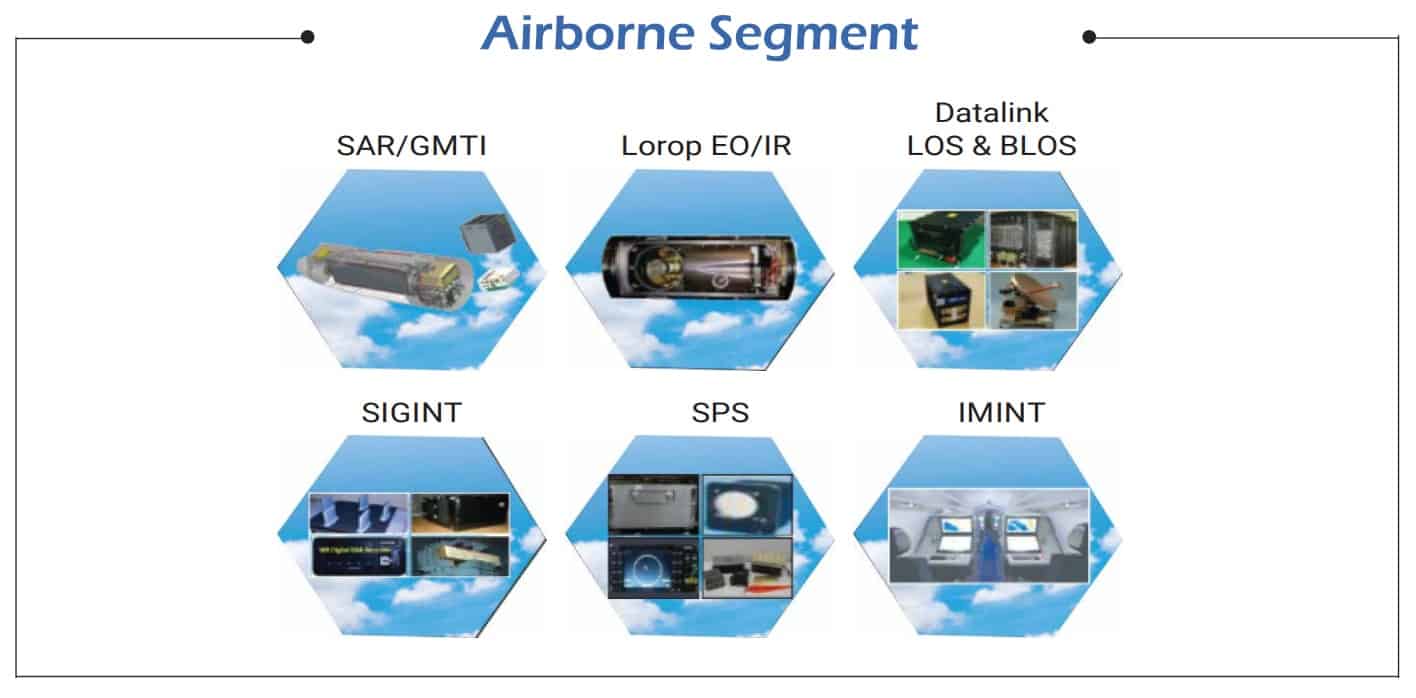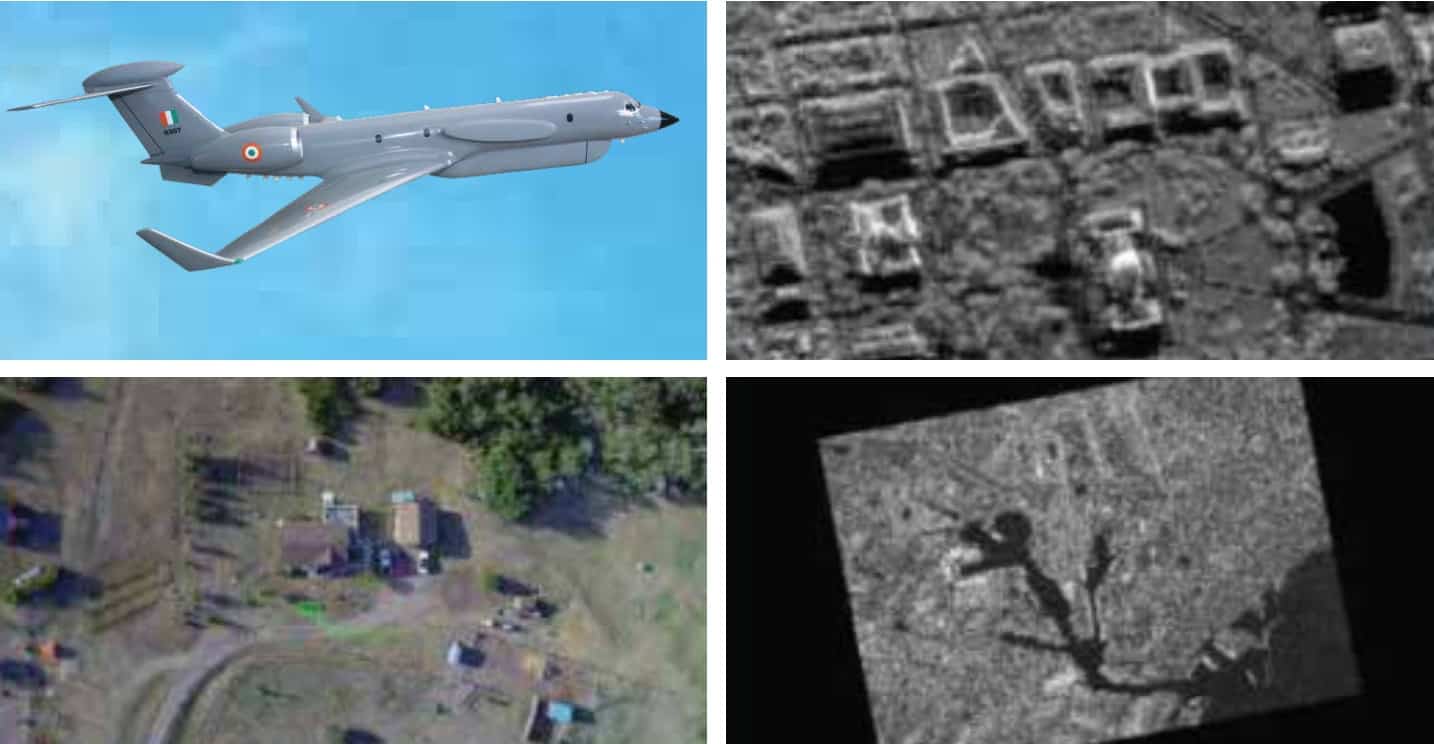
The Indian government is all set to clear paperwork in the coming months to acquire a U.S. ISTAR (Intelligence Surveillance Targeting and Reconnaissance) battlefield and ground surveillance aircraft platform, the first step towards a larger joint project that will see India’s Defence Research & Development Organisation develop sensor technologies for an additional four aircraft. A model of proposed Indian ISTAR jet was displayed for the first time at the Aero India 2021 show earlier this month, which Livefist can confirm is a signal that things are on track after a troubled journey thus far.
The first official literature on the Indian ISTAR describes it as ‘cutting edge technologies for the nation in support of precision strike’. That the speeding up of the program has happened in the aftermath of the Balakot air strikes by India on Pakistan is no coincidence. Tomorrow marks two years since the military operation that saw Indian Air Force jets, supported by Indian airborne surveillance assets, striking terrorist targets deep in on Pakistani soil. Laboratory literature on the Indian ISTAR program goes on to say, ‘ISTAR is a MULTI INT Solution capable of exploiting image, SIGINT and track info from sensors and provide actionable intelligence for tactical and strategic advantage.’
In 2019, a Livefist newsbreak had revealed that efforts to acquire ISTAR aircraft had been bedeviled by a DRDO-Indian Air Force turf war over testing. Since then, the Indian and US governments have managed to bring things back from the brink. You can read Livefist’s detailed report with the background here. Sources familiar with the Indian ISTAR program confirm that paperwork to support the Indian MoD’s procurement clearance is under creation and will be moved by the middle of this year. The Indian Air Force is said to have expressed urgency in the program, and has provided full backing to the indigenous ISTAR as a priority future asset.

In the mean time, work on the Indian ISTAR’s radar, electronic intelligence, communication intelligence and other sensors has already begun at the DRDO’s Centre for Airborne Systems (CABS), with two years of work already in. The team that developed the Netra AEW&C airborne system in service with the Indian Air Force has now been split into two expanded teams — one focused on the ISTAR program, and the other working on the Netra Mk.2, a program where the existing Netra radar system will be integrated with pre-owned Air India A320 passenger jets. Livefist has detailed that latter program here.

Described by the DRDO as a ‘system of systems’, the ISTAR comprises airborne and dround segments based on a ‘high altitude, high endurance, transport jet’ sporting very high resolution imagery from long range SAR and EO/IR, ground moving target detection of slow moving objects, the ability to track mobile ground targets, map natural disasters, area monitor vessels, monitor activities near border and littoral areas. It also states that the ‘multi intelligence system’ uses AI/ML/DL to infer actionable Intelligence IMINT and SIGINT information to form a common operating picture (COP).

A formal decision hasn’t been taken yet, the Indian ISTAR — like the U.S. aircraft to be procured under the Defence Technology & Trade Initiative (DTTI) — will be based on the Bombardier Global Express business jet platform. A separate procurement of four jets will commence as the program matures in the next two years. Much of the work done on the Netra Mk.1 AEW&C program will expectedly flow into the DRDO’s ISTAR, though a large number of Indian private start-up companies have been enlisted to contribute to the indigenous software architecture will be proprietary to Indian battlefield and ground surveillance needs.

Apart from airborne intelligence aircraft operated by India’s Research & Analysis Wing (RAW), the Indian Air Force currently operates three Phalcon AWACS (with two more to be contracted) and two DRDO-Embraer Netra AEW&C jet. A third of the type is being used by the DRDO as a sensor testbed. The DRDO was earlier also developing an AWACS system based on the Airbus A330 widebody jet platform, though that has, at the very least, been pushed down the priority ladder, if not shelved for now. On the other hand, with priority backing, and transactional muscle provided by the India-US relationship, the ISTAR program is expected to move smoothly forward.


Sir please publish a detailed report on Newspace Defense’s ACID programme, we are eager to know how well it performs against the USA’s Heron Systems AI agent.
None of these can hide the swift retort reverse IAF had with PAF.
Nor can they return them ??
Take a hike, Paki.
You must be living in a parallel Universe because as the former Pakistan Parliament Speaker’s admission on the floor of that country’s Parliament shows, the Pakistani Army Chief was quivering in his boots. The so-called “retort” was a puny attempt at saving face. Subsequent images show that the Pakistanis even jettisoned some of their bombs well within their territory because they didn’t have the guts to strike deep in Indian territory. All in all, Pakistan must have learned from 2019 that it cannot fight wars successfully while it runs around with a begging bowl internationally. Hence the recent sheepish peace overtures by Bajwa and co.
U mean swift retreat
That Pakistanis took IAF by surprise. The IAF pilots were celebrating their success and radar controller were asleep except one. Result was that the Pakistanis managed to lob a few bomb at brigade headquarters but missed. Bravery was for the lone Indian pilot who came out with his MIG-21 and fought a battle and shot down one F-16.
He did NOT shoot down any F 16 whatsoever. That is a fabrication based on the recovery of parts of a missile carried by an F 16. No wreckage of a F 16 was ever located. Wing Commander Abhinandan Varthaman may indeed have targeted an F16. Lets keep this simple and put this nonsense to bed. The deployment of F .16 fighters in combat with the IAF was a clear breach of the formal agreement with the US NOT to deploy the F.16’s in a combat environment with Indian assets. In fact, Delhi drew Washington’s attention to this breach with a complaint. With one F.16 supposedly shot down and missing, the United States, not happy with Islamabad, sent a team of inspectors to Pakistan to check on the inventory of F 16’s deployed. In other words count the number in service. A long process as this was not about a simple body count but checking the ID’s codes on engines and other tech on each fighter. Each F 16 had its own unique code and the bottom line is that the US inspectors confirmed ALL F .16’s were present and accounted for. As for the Pakistani’s taking the IAF by surprise. Really?? You guys initiated the surprise with well deserved surgical strikes. Wing Commander Abhinandan Varthaman is a top notch pilot and the only reason he was shot down was he was at the controls of aircraft that ruled the skies in 1959 and should have been retired years ago. Along with the 110 or so Bison’s still in service with the IAF
Ya ur quite wrong the missiles recovered had a lot of funny work associated with with one of the vympels didn’t even had a broken Fin , claims of such inspection were refuted by US took paf 39 days to show missiles also the fraud of switching the f16b with tail no to a f16b , tadpoles and multiple parachutes f16 was indeed shot it doesn’t take away the f16s brillancy just the pilots flying it were idiot
The top-notch pilot Abhinandan wasn’t able to fire even a single bullet. Even his all AAM seekers were found intact from the crash site. Plus, nor there had been a surgical strike neither a violation of agreement between US and Pakistan.
Hari
I see you listen only to the Indian news chamnels
Nor can they return them ??
If they’re going to procure a new aircraft and add a new platform to the logistics chain anyway, I wonder if there’s a missed opportunity in the RAF Sentinels that are facing the axe in the UK? They would offer quite a lot of the same capability and perhaps at a cut price deal – granted the RAF is flogging the Sentinels as individual components rather than the whole system but seeing as the base jets for the Sentinel are Bombardier Global Express anyway, maybe those airframes can be acquired? Wouldn’t that be super quick?
RAF Sentinels in pieces, cheap aircraft that need only some refurbishing and then retrofit them with Raytheon kits. What could possibly go wrong?
Why does Gorshkov come to mind?
I agree that the Gorshkov is a cautionary tale for sure but this isn’t some post Soviet relic being brought back to life. Sure the Sentinels have some mileage on the wings but surely it won’t be in as bad nick as say if it was some rusting Soviet hulk. I was just spitballing though, there might be something in that RAF garage sale that might be worthwhile.
Part of me is wondering if the newly announced Israeli platform, the Naschon Oron might be a good example for the Indian programme. I would imagine India is familiar with quite a lot of the Israeli subsystems like the cheek mounted Elta radar.
Goroshkov was a helicopter carrier and that was highly modified to become INS Vikramaditya,
On the other hand RAF Sentinels have to be checked for their air frame and flying capability. If acceptable then fitting our avionics on them would not be that difficult, I do not think much modifications would be required, For transformation of Goroshkov to INS Vikramaditya the transformation took a lot of material, time, If you look at photos of what Goroshkov was and what it was transformed into, they would be two different vessels. Further this is UK and not Soviet union.
As a radar GMTI and SAR field service rep for ISR Sentinel ac working alongside the military in deployed locations – i can only say that the airframe and the radar were fantastic. The problem was that it was under invested for years and therefore now expensive to revive to a modern day platform. Such an unbelievable waste.
India must have this combat enabler as well as two AWACS .